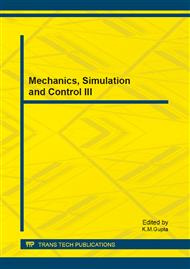p.327
p.333
p.339
p.347
p.353
p.357
p.363
p.369
p.377
Application of Sliding Mode Control for Wind Power Generation System
Abstract:
The wind power generation system have strong nonlinear characteristics with many uncertain factors, which was hard to be controlled exactly by traditional controllers and the sliding mode control was proposed, the sliding surface was selected, the equivalent controller and sweithcing controller was designed. The wind power generation system was analyzed and the mathematical models of aerodynamics, drive train and electromagnetic subsystem were created. The control strategy was applied into wind power generation system with MATLAB/Simulink platform, and the simulation result shows this model is of more important significance on researching the power characteristic and control performance for power generation system, the sliding mode control with high power tracking performance, which can effectively implement maximum energy capture.
Info:
Periodical:
Pages:
353-356
Citation:
Online since:
August 2013
Authors:
Price:
Сopyright:
© 2013 Trans Tech Publications Ltd. All Rights Reserved
Share:
Citation:


